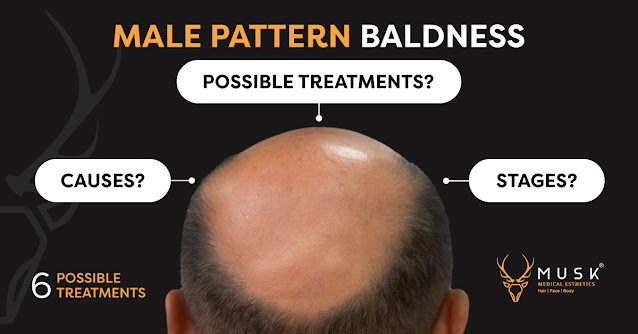Male Pattern Baldness: Causes, Stages, and Possible Treatments

If you've noticed that your hairline is starting to thin, the crown area is expanding, a new bald spot is appearing, or you're seeing more extra hair in your hairbrush, then male pattern baldness is the reason. Almost all men have some sort of hair loss problem when they are in their 50s and it is even quite common for certain medical conditions to cause them to lose their hair and become almost bald. But the question is how male pattern baldness occurs. At the time of baldness, the hair follicles begin to shrink and a thin stub of hair grows out of the skin, causing patches in different areas of the scalp. There are many more reasons for baldness. So let's go through the entire blog to solve all the queries. What is male pattern baldness? Male pattern baldness is considered a minor medical condition that seems to be common in every man between the ages of 30 and 50. Androgenetic is another name for male pattern baldness. From scalp hair loss to a receding hairline on the...
